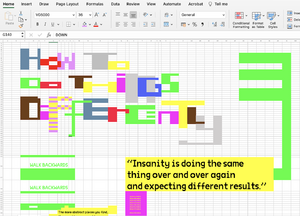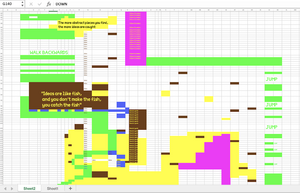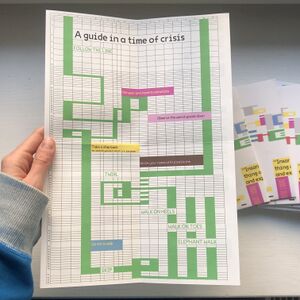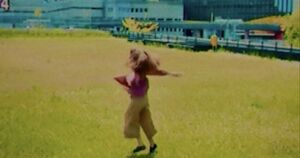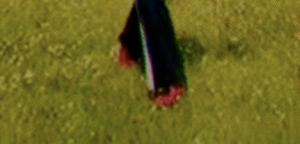User:Mania/Special Issue 23: Difference between revisions
| Line 264: | Line 264: | ||
Kids recorded interviews, talked with people in local shops … | Kids recorded interviews, talked with people in local shops … | ||
Its possible to do research in different way then a text, | Its possible to do research in different way then a text, | ||
==missed connections== | ==missed connections== | ||
Revision as of 15:40, 3 February 2024
Quilting infrastructures
Special Issue 23 notes, observations, reflections, findings
Workshop matters
Neighbourhood lab
page dedicated to community empowerment in urban context. the aim is to collect tools and focus on potential of neighbourhoods as learning environments
Neighbourhoods as learning environments
Library - non commercial space. its a public leaving room, a place for knowledge sharing and knowledge production. Its a public good. Third place - not work not home
CheFare
https://che-fare.com What does it mean to transform public society?
- Changing power structure of society - Participation processes - Mobilizing, collective intelligence (library, museums, independent cultral centres, public spaces…) - Tools; mediation, translation (different intrests, trying to move power balance. Rebuild new discourses. Interdisciplinarity)
Role of conflict in participation -radical mediation
- Creating new power relations
Be clear with the participants on the purpose of the involvement. Kick off moment to define a clear way how we will work what are the shapes of the involvement.
1. RECONNAISSANCE The firts step is to understand the context from multiple perspectives Defining the target area, assesing the community involved , with their needs and issues
2. ENGAGEMENT
3. STORYTELLING / narratives Finding the right connection and perspective Setting expectations Communicating ideas / sharing vision Using storytelling practices
4. CO-CREATION
5. REFLECTION Assesing the impact of whatr is co-produced
Glossary: Essentail part of participatory projects. Trying to understand what do we mean by different terms.
COMPENDIUM OF LOCAL EXPERIENCES - LOCAL LABS
Sevilla local lab - Rosalia Guiterres and Julia Cortegana Zemos98
Create a common story of the neighbourhood, open to public, Archival gathering
Video magnetic tapes
Sofia local lab - yanina taneva, ideas factory
Glossary with common words A local market Creating a map - set as a common vision, common goal. For axample; map of tastes
A walk - a simple walk is a bridge to trust building
Marseille local lab
Participatory projects Promote initiatives of local organisations
Give visibility to co-creation projects
Palermo local lab
There is Fruit market in the neighbourhood, flee market clsose to cathedral, involve vendors of the market, started with interviewing them, gove light to the market ,
Storytelling workshops - peole where going to the shops and choosing objects and then creating a story
Together they are strong as vendors of the market. They have a cultural value that can be shared..
Between the vendors there where not always good relations…
Vendor - sprzedawca, handlarz
Berlin local lab - Luismi Gueli
Cultural transformation Breakfast club + sharing information about the neighbourhood - everyone bring something How the group of woman support each other and are there for each other
Film maker
Process of opening up and sharing and breakig up bubles, trying to build bridges between different spheres
Sharing our backround, coming from different places with different experiences and leaving aboroad
We are often trying to create something new, but you can strenghten what is already happeing.
You want A place that is more lively and respectful considering there are people coming from different cultures.
How to adress the hard aspects imposed on the residents. How to find the balance. There are some limits
QUESTIONS
What triggers you what kind of knoledhge do you need to start being a neighbourhood facilitaor?
---->>> Being curious about a specific space, willingness to engage , involve people and build a relationship with them. Create a story with them which gives voice to the residents. And then reflection ; a tool like engagement diary.
Frustracion; acknowledging existing problems, and learning, creatong learning community which is constantly learning
CHANGING NEIGHBOURHOODS
Learning from a process of social transformation What's IN-HABIT?
IN_HABIT Palmeras , "las Palmeras is one of the 5 poorest neighbourhood of Spain
Local peiople are the real experts, ask them what is happening in their ara , how they live and what they need
Empowerment as the motor of change
GOVERNING COMMONS
The Mumbai Ensemble
Dharavi - The most dense neibourhood in the city Not necesarilly helping each other but learning from each other…
Schools at the centre of the future:
in Brescia, urban regenerationstarts from educational contexts - Camilla Pinoli Brescia neighbourhood Spazio lampo - listening and involvement processes
HAU TO CONNECT
practices of belonging to a neighbourhood Who has never use this places How can we take action for a past and present inequalities?
s o l i d a r i t y
Listen to a place
Look what is already out there
What are the limitations of the practice?
Who is active?
How can you support what is already happening
Curate a dialogue
Look at the space as if you are looking at it for the first time
Have patience
Have you changed after the work?
Try different tactics
Find like minded people
Whose perspectives are misssing?
Practice power sharing
What participants need?
Turn it into a graphic novel
How participants perceive gentrification?
Invite your neigbours for a picnic
Draw portraits of your neighbours and ask them for their stories
Be present at the local markets
Give small things a big stage
Don't be afraid of words
Look at the means of production
Be aware
Communal love
Make the work visible
Do u have support ?
Be aware of your power
Be soft
Step back, give voice
Share autorship
L'ecole des communs
Walking - to get out of the 'buble' (reapriopriate the streets with adults and kids) Games- to connect theory to practices of commons + to unravel; imaginaries of sharing Local research
Temporlity
What our initiative leaves in time?
Documentation- languages to make visible the invisible (how do we let these experience speak for themselves and make it accesible for the publics that are not in tje neighbourhoods)
48-hour momentum
Transforming and enjoying Closing a road for a festival
Córka właścieciela restauracji która była ' facilitator", ojciec już nie zyje, wczesniej w jego restauracji ludzie wymieniali się informacjami i poznawali się i community kwitło tam
>>>>>>>There is a lot happening that is invisible. Coffe places where neighbours meet and share information. Work of care . Pharmacies…
Pleasure - is a recource that always function !
Exploring neighbourhoods - creative approach
day 2
DESCIVER CREATE ACT - RESHAPING THE LOCAL BY CO-DESIGN PROJECT WITH CHILDREN AND YOUTH
talk by Hendrik Weiner
Co-design project as a research tool- planning, design, and research not for or about people but with and by people concerned & interested
"those affected by a design should have a say in the design process" ~Bjogvinsson, Ehn, Hillgren 2012
- Scandinavian Participatory Design (PD) (Ehn, Nilsson, Topgaard 2014) - Participatory Action Research (PAR) (Kindon, Pain, Kesey 2010) _'research through design' + 'research by design' (Jonas 2007)
Methods:
- to perceive; expedition / walks
- to design; model making / collage /drawing/ building
- to produce and organise; build and cook / buy materials
- to interact and intervene; street performances/ mobile kitchen, street exhibition/ park(ing) day
Conclusion
- mutual learning process for all participants
- variable roles in the project
- new viewpoints, skills, networks
- starting point of local networks and co-productions
- instruments of outreach work
- local co-design project as participative method of urban design
UNDRAWING THE NEIGHBOURHOOD WITH CHILDREN
talk by Kitti Baracsi
Who produces knowledge on the city?
- Collective learning
- Projects with children - its not about teaching them something but together with them create a knowledge about a city
- Produce and share knowledge on their neighbourhood and complex urban issues, in collaboration with adults
- Creative formts as legitimate research output
Methodology
- What do we know?- collective counter maps of the neighbourhood
- What do we want to learn about?- exploratory walks(observation in the street ; sonic, visual map) ,map, etnographic research in the neighbourhood(interviews, drawings, photo, audio, and more)
- What do we wanmt to share from what we have learnt?reflection circles, drawing after the interviews as an analytical tool telling the stories, stop motion, collective maps, exhibition, tour, musical album
How children visualise the cities of today and tommorrow? The main qestion was what is the human heritage - children went to ask people
Kids recorded interviews, talked with people in local shops … Its possible to do research in different way then a text,
missed connections
hand drawn maps
mapping communities learning environment
good practices
walks
Institute of play
Sandbox for experiments and happy accidents
How to do things differently
This zine is a guide in a time of crisis. When you feel stuck, you can follow the green line to get some instructions, cause “Insanity is doing the same thing over and over again and expecting different results”. ..............................................................................................................So observe the world upside down, walk backwards or do an elephant walk, use your left hand, or write your name with plasticine and fill your source of inspiration. This zine was made fully in Excel, cause I also felt uninspired and needed to to do something differently.
Kate Bush dance
Podsumowałam sobie ten rok i mimo, że strasznie dużo płakałam, to ten rok był też na maksa przygodowy i wiele udało mi się osiągnąć. Przeprowadziłam się do Rotterdamu do starego holenderskiego domu z ogrodem. Mój projekt oznakowań funkcjonuje w przestrzeni publicznej w Amsterdamie. Dostałam staż w Rotterdamie na którym mi bardzo zależało. Dostałam się na wymarzone studia! Nauczyłam się dużo nowych rzeczy: jeździć na deskorolce, grać na ukulele, chodzić po linie. Moja ilustrowana książka była na wystawie w Katowicach. Cały rok tańczyłam i chodziłam na ściankę wspinaczkową i już jestem w to suuper! Zaprojektowałam logo na wielki holenderski event. Przeczytałam mnóstwo książek i obejrzałam prawie wszystkie dokumenty Agnes Vardy. Uczestniczyłam w wielu szalonych warsztatach o interaktywnych tkaninach czy budowaniu z chleba. Poznałam wspaniałych ludzi, z którymi potem jeździłam stopem po Francji, bawiłam się na najmiejszym pod słońcem festiwalu filmowym, oglądałam noc spadających gwiazd we Włoszech. Dostałam pracę jako graficzka i ilustratorka. Moje ziny były na targach zinów. Robiłam dużo rzeczy poza moją strefą komfortu. A na koniec roku zorganizowałam sobie samotny wypad do Berlina, gdzie poznałam świetnych australijczyków.


